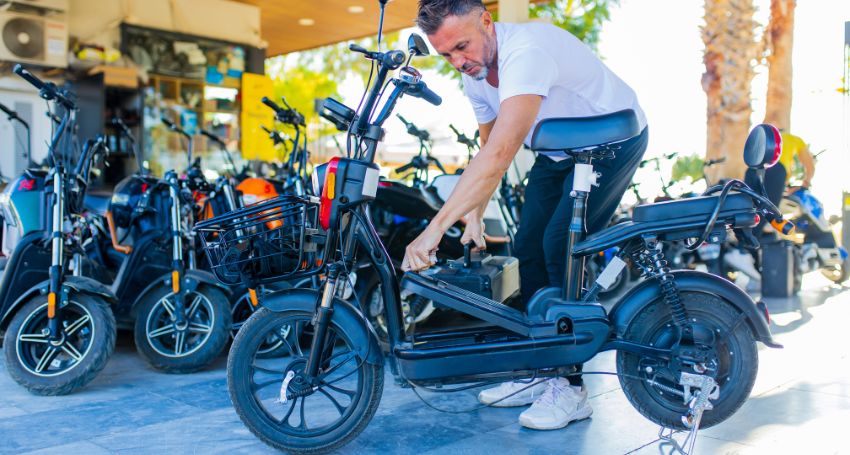
Micromobility is rapidly transforming how we move through city streets. From electric scooters and e-bikes to shared bike systems and e-mopeds, the micromobility market is redefining transportation options in urban centers. As cities evolve into smart cities and aim to reduce congestion and carbon emissions, micromobility plays a vital role in shaping the future of urban transportation. This article explores how micromobility is being adopted, its challenges, the latest trends and technologies, and the implications for the mobility ecosystem based on insights from industry leaders including McKinsey.
What Is Micromobility and Why Does It Matter?
Micromobility refers to small, lightweight vehicles such as bikes, scooters, e-bikes, and e-scooters that are typically used for short-distance travel. These vehicles are ideal for replacing short car trips and navigating dense city streets. They are also seen as a more environmentally friendly form of micromobility that reduces dependence on private car ownership.
With rising urban congestion and environmental concerns, micromobility offers a more sustainable alternative to traditional modes of transportation. It plays a growing role in the broader mobility ecosystem, especially in areas underserved by public transportation or where last-mile connectivity is a challenge.
How Is Micromobility Transforming City Streets?
Micromobility is reshaping how people interact with city infrastructure. City governments and planners are reimagining urban spaces by introducing more bike lanes, reducing parking spots for cars, and allocating space for dockless scooters and bikes. This transformation promotes more walkable, pedestrian-friendly environments.
Micromobility also supports better access to transit stations and city centers, allowing people to combine micromobility options with public transportation. This integrated approach helps reduce traffic congestion and promotes sustainable urban transport.
What Are the Types of Micromobility Vehicles?
The most common types of micromobility include bicycles, e-bikes, electric scooters, and e-mopeds. These vehicles vary in speed, range, and design but all share the goal of offering convenient, low-emission transportation for short distances.
Shared micromobility systems like bike-sharing and scooter-sharing platforms have made these options more accessible in major cities. Many cities now offer multiple modes of micromobility, providing riders with choices that suit their preferences and travel needs.
What Role Do Shared Micromobility Services Play?
Shared micromobility, including platforms like Uber’s e-bike and scooter services, allows users to rent vehicles on demand. These services use smart technology to track vehicle location, battery life, and usage trends. They also offer data that city planners can use to identify service gaps and improve urban mobility.
Subscription models are also gaining traction, where users pay a monthly fee for unlimited rides. These services have contributed to the increase in the number of rides per day in cities worldwide, demonstrating the demand for flexible and convenient mobility options.
What Challenges Does Micromobility Face?
Despite its benefits, micromobility faces several hurdles. These include regulatory inconsistencies, limited bike lanes, lack of parking space for micromobility vehicles, and safety concerns for riders and pedestrians. Managing the rapid growth of shared micromobility fleets is also a concern for city officials.
Battery sustainability and life cycles, vehicle durability, and the management of e-scooter clutter on sidewalks are challenges that require smart planning and coordination between micromobility operators and local governments.
How Are Smart Cities Supporting Micromobility?
Smart cities are leveraging data and technology to support micromobility. Cities are deploying smart parking sensors, real-time vehicle tracking, and digital payment systems to improve the rider experience and operational efficiency. Some urban areas use AI to forecast micromobility usage and demand, ensuring better fleet distribution.
City governments are also promoting micromobility by offering incentives to use shared rides, investing in safer bike lanes, and integrating micromobility with public transit apps. These efforts aim to make micromobility a reliable part of daily urban transportation.
What Is the Impact of Micromobility on Car Travel and Emissions?
Micromobility is helping reduce reliance on private cars, which lowers emissions and frees up road space. Studies have shown that a significant portion of micromobility trips replace car travel, especially for short distances. This shift can lead to reduced carbon emissions, lower transportation costs, and improved air quality.
Replacing short car trips with micromobility options also contributes to a decrease in traffic congestion and noise pollution, making cities cleaner and quieter. The cumulative impact across thousands of daily rides has substantial environmental benefits.
How Does the McKinsey Center for Future Mobility View Micromobility?
According to the McKinsey Center for Future Mobility, micromobility will play a major role in future transportation ecosystems. McKinsey’s analysis highlights the economic and environmental potential of micromobility, noting the increase in venture capital investment and the growing number of micromobility operators worldwide.
They also emphasize that the future of mobility will be shaped by how effectively cities and companies integrate micromobility with other mobility modes. Creating seamless experiences and prioritizing rider safety will be crucial in making micromobility mainstream.
What Are the Biggest Trends and Technologies in Micromobility?
Emerging trends include the use of autonomous micromobility vehicles, AI-powered route optimization, and improved battery technology. Lightweight materials and modular vehicle design are making micromobility vehicles more durable and efficient. The integration of IoT and app-based controls offers riders more transparency and control over their transportation experience.
Cities are also experimenting with dynamic pricing and mobility hubs, where multiple transportation options converge. These innovations are part of a larger effort to enhance urban mobility and encourage the adoption of alternative modes of transportation.
What Is the Future of Micromobility?
The future of micromobility looks promising, with continued growth expected in both private and shared micromobility usage. As cities invest in infrastructure, regulations evolve, and technology advances, micromobility will become more integrated into daily urban life.
Micromobility is no longer a niche trend but a central pillar in efforts to build sustainable, smart cities. It complements public transportation, promotes equity in mobility access, and addresses key urban challenges like congestion, emissions, and limited space.
Conclusion
Micromobility is at the forefront of transforming mobility in cities around the world. With its potential to reduce car travel, improve sustainability, and create smarter urban environments, it’s clear that micromobility will play a lasting role in the transportation mix. As technology continues to evolve and cities adapt their infrastructure, the integration of micromobility into the broader mobility ecosystem will redefine how we move, work, and live in urban spaces.



